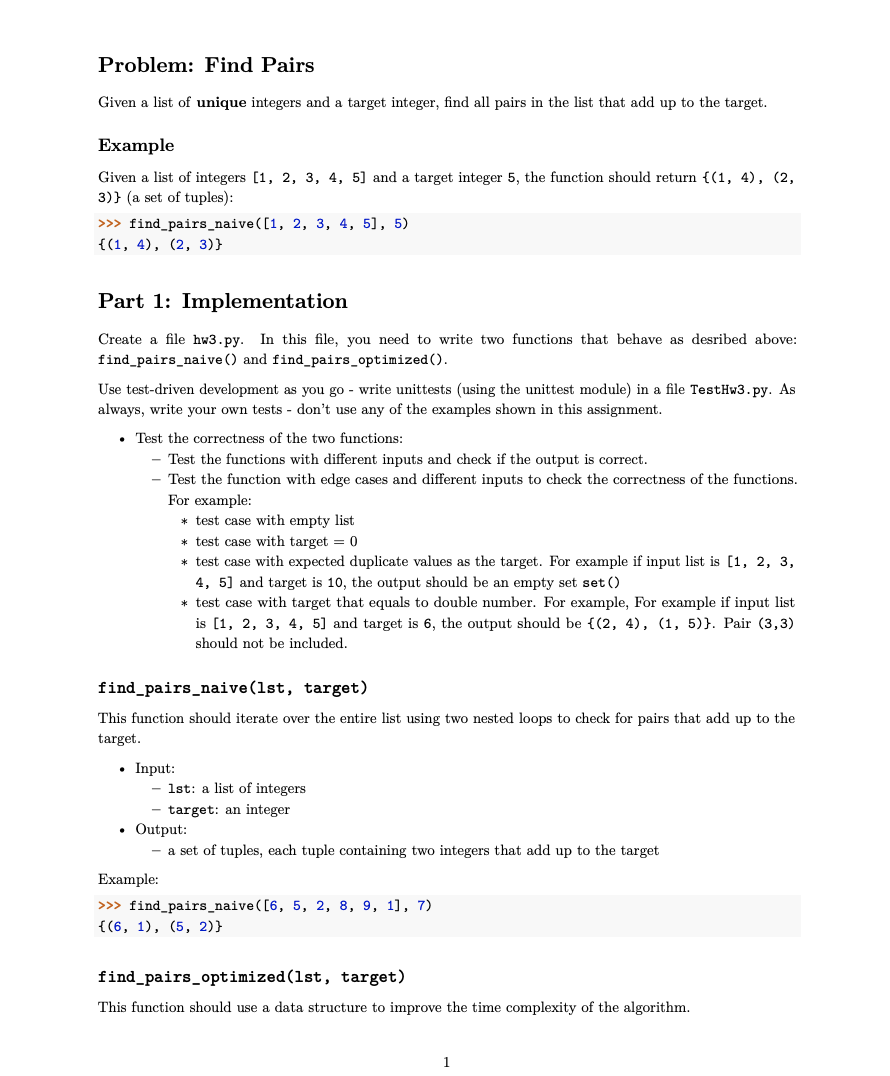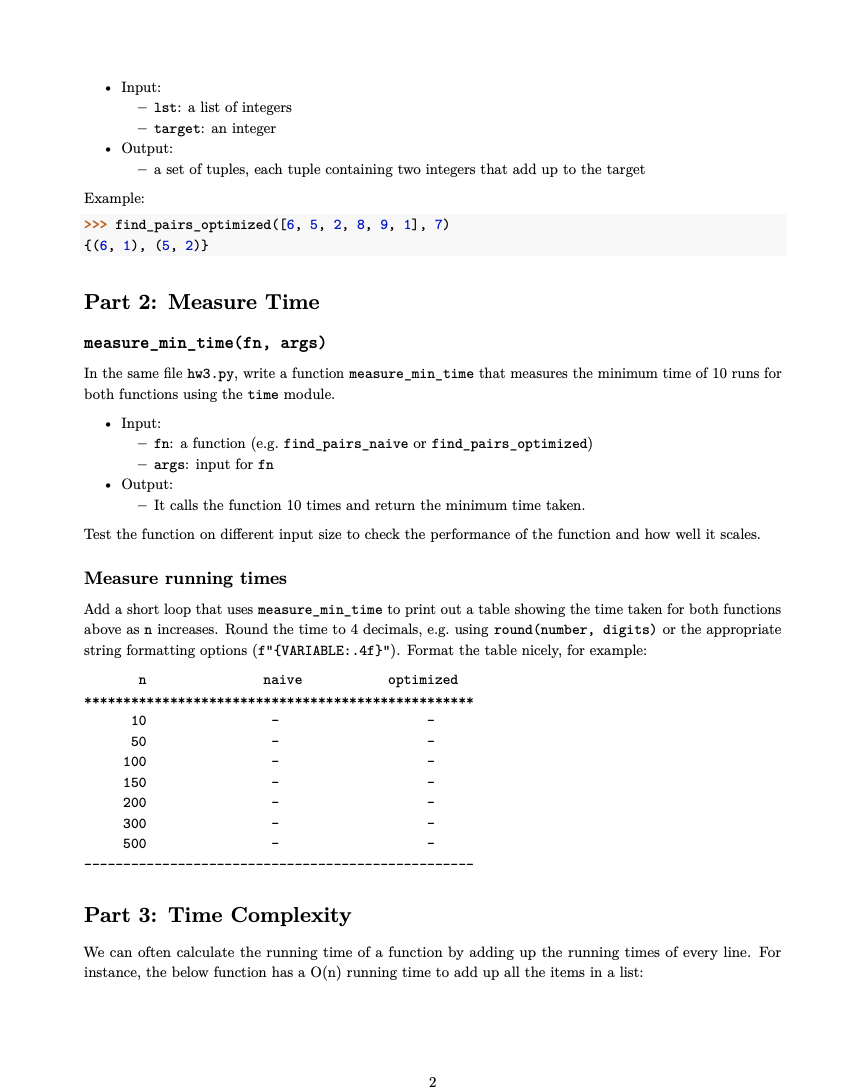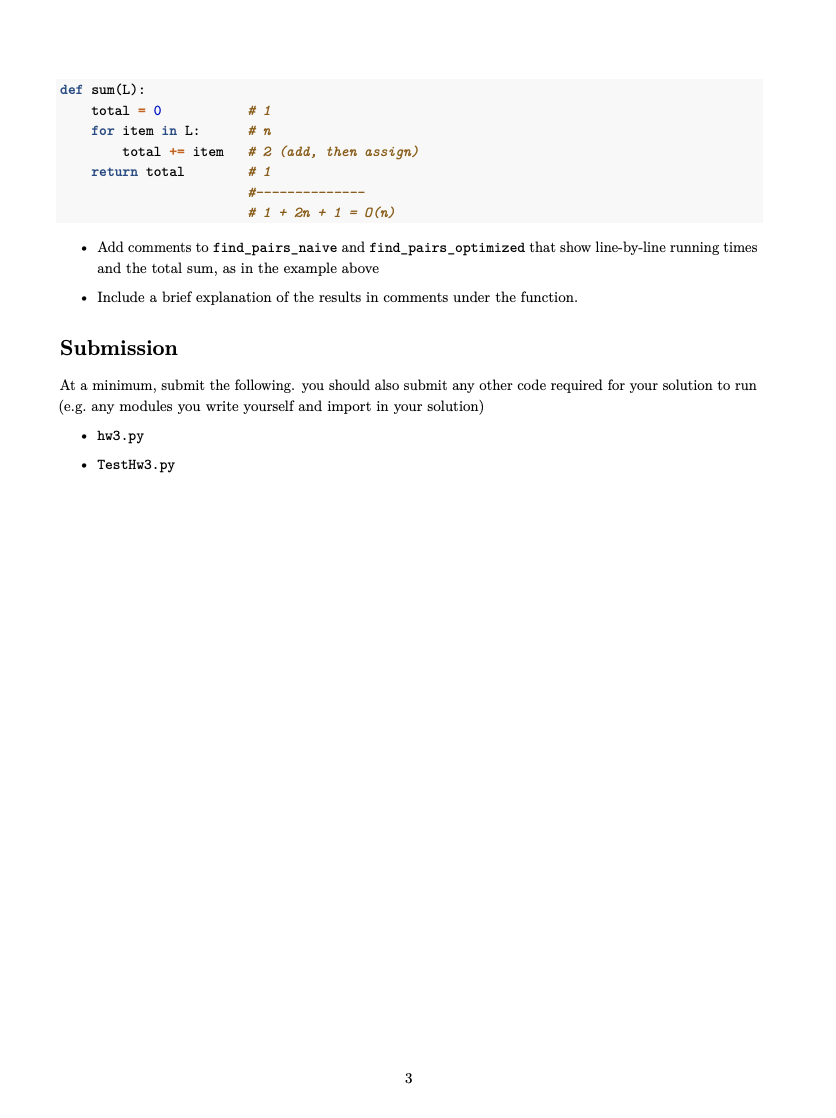


Problem: Find Pairs Given a list of unique integers and a target integer, find all pairs in the list that add up to the target. Example Given a list of integers [1,2,3,4,5] and a target integer 5 , the function should return {(1,4), (2, 3)\} (a set of tuples): find_pairs_naive ([1,2,3,4,5],5) {(1,4),(2,3)} Part 1: Implementation Create a file hw3.py. In this file, you need to write two functions that behave as desribed above: find_pairs_naive() and find_pairs_optimized(). Use test-driven development as you go - write unittests (using the unittest module) in a file TestHw3.py. As always, write your own tests - don't use any of the examples shown in this assignment. - Test the correctness of the two functions: - Test the functions with different inputs and check if the output is correct. - Test the function with edge cases and different inputs to check the correctness of the functions. For example: * test case with empty list * test case with target =0 * test case with expected duplicate values as the target. For example if input list is [1,2,3, 4,5 ] and target is 10 , the output should be an empty set set() * test case with target that equals to double number. For example, For example if input list is [1,2,3,4,5] and target is 6 , the output should be {(2,4), (1, 5) }. Pair (3,3) should not be included. find_pairs_naive(lst, target) This function should iterate over the entire list using two nested loops to check for pairs that add up to the target. - Input: - lst: a list of integers - target: an integer - Output: - a set of tuples, each tuple containing two integers that add up to the target Example: \[ \begin{array}{l} \gg \text { find_pairs_naive }([6,5,2,8,9,1], 7) \\ \{(6,1),(5,2)\} \end{array} \] find_pairs_optimized(lst, target) This function should use a data structure to improve the time complexity of the algorithm. - Input: - lst: a list of integers - target: an integer - Output: - a set of tuples, each tuple containing two integers that add up to the target Example: \[ \begin{array}{l} \gg>\text { find_pairs_optimized }([6,5,2,8,9,1], 7) \\ \{(6,1),(5,2)\} \end{array} \] Part 2: Measure Time measure_min_time(fn, args) In the same file hw3.py, write a function measure_min_time that measures the minimum time of 10 runs for both functions using the time module. - Input: - fn: a function (e.g. find_pairs_naive or find_pairs_optimized) - args: input for fn - Output: - It calls the function 10 times and return the minimum time taken. Test the function on different input size to check the performance of the function and how well it scales. Measure running times Add a short loop that uses measure_min_time to print out a table showing the time taken for both functions above as n increases. Round the time to 4 decimals, e.g. using round (number, digits) or the appropriate string formatting options (f"\{VARIABLE: .4f\}"). Format the table nicely, for example: Part 3: Time Complexity We can often calculate the running time of a function by adding up the running times of every line. For instance, the below function has a O(n) running time to add up all the items in a list: - Add comments to find_pairs_naive and find_pairs_optimized that show line-by-line running times and the total sum, as in the example above - Include a brief explanation of the results in comments under the function. Submission At a minimum, submit the following. you should also submit any other code required for your solution to run (e.g. any modules you write yourself and import in your solution) - hw3.py - TestHw3.py









